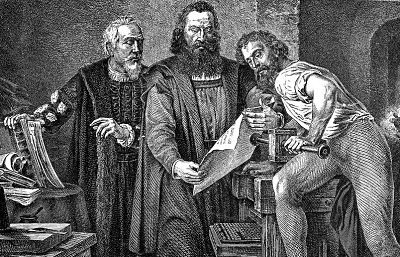Technology: What Doesn’t Kill Us Makes Us Stronger
As MOOC mania approached its peak in 2012, Anant Agarwal, the president of the Massive Open Online Course platform edX, claimed:
Online education for students around the world will be the next big thing in education. This is the single biggest change in education since the printing press.
The claim was repeated many times. Indeed, 15 years earlier, management guru Peter Drucker had anticipated this:
Thirty years from now the big university campuses will be relics. Universities won’t survive. It’s as large a change as when we first got the printed book.

This article by Gavin Moodie originally appeared at The Conversation, a Social Science Space partner site, under the title “Technology improves higher learning, it doesn’t kill it”
In a paper published recently in History of Education, I considered how printing changed universities, such as their lectures and libraries.
How did printing change lectures?
At least some medieval universities had cursory lectures in which bachelor students read set texts to undergraduates to take notes or dictation. Cursory lectures were necessary when undergraduates did not have access to set texts because manuscripts were far too expensive to be afforded by most students. Printing greatly increased the availability and affordability of texts, thus removing the need for cursory lectures, which were therefore ended at Oxford at least by 1584.
Masters at all medieval universities offered at least one other type of lecture, “cum questionibus” (with questions), or expository lectures which posed problems and questions arising from the text. Some contemporaries suggested that printing would make even these lectures redundant.
Autodidacticism, or self-directed learning, was one of the points raised by the Benedictine scribe Filippo de Strata in his argument against printing in 1473. Yet lectures persisted after printed books became ubiquitous, despite problems with attendance (then, as ever!).
This is because lectures and other traditional face-to-face and mediated teaching modes help students to manage their learning: maintaining motivation, identifying and using resources to support their learning, planning and scheduling their study, assessing their progress and adjusting strategies. Students also need modelling, help and support in mastering material, diagnosing individual problems and overcoming their specific difficulties.
How did printing change libraries?
The effect of printing on scholarly libraries illustrates a different point. Libraries in medieval European universities loaned manuscript books to masters to use in their teaching and scholarship. This role became redundant when printing made books affordable for masters and students (although libraries were closed to undergraduates who at Cambridge were subject to a fine even for entering them in the early 17th century). As scholar Andrew Pettegree observed in The Book in the Renaissance:
the library had struggled to find a role in the new age of print.
University libraries did not develop a new role until the 18th century when books became so numerous that scholars could no longer have in their personal collections all the texts that they would routinely use. A pedagogical role emerged for libraries in helping students structure, navigate and manage the texts relevant to their learning.
This pedagogic role was of course new and very different from any role that libraries had served before printing. A contemporary analogy might be what is often called digital literacies, which libraries are also supporting.
Technology improves universities
Print, like digitization, greatly increases and facilitates access to information, making learning resources much more accessible. But while printing greatly expanded the provision of information, it did not change the way people learn.
It is clear that the current information revolution is transforming society and that it is at least facilitating contemporary universities’ teaching. But by extension from printing’s effects on early modern universities, the central issue is the extent to which the information revolution is transforming in addition to facilitating universities’ teaching.
Clearly neither MOOCs nor online learning generally have fulfilled the predictions of what Canadian higher education analyst Alex Usher called the
techno-fetishist windbags who tried to make us all believe that the VC-funded MOOCs were an unstoppable wave of the future.
Online learning experts Martin Weller and Tony Bates are rightly annoyed that the MOOC-hypers felt no need to inform themselves on 40 years’ expertise and experience of mediated learning and 20 years of online learning because their self-declared “disruption” somehow made all previous knowledge about teaching-learning redundant.
While MOOCs have usefully woken elite universities to online learning, which they mostly ignored for two decades, they are unlikely to “disrupt” universities any more than Gutenberg’s information revolution disrupted early modern universities. Rather more likely is that, as with printing, informal, open and online learning will be absorbed within existing universities to augment and improve their practices.![]()





























































































Great article, I strongly agree that technology improved universities, to be honest I can not imagine universities without technology today.